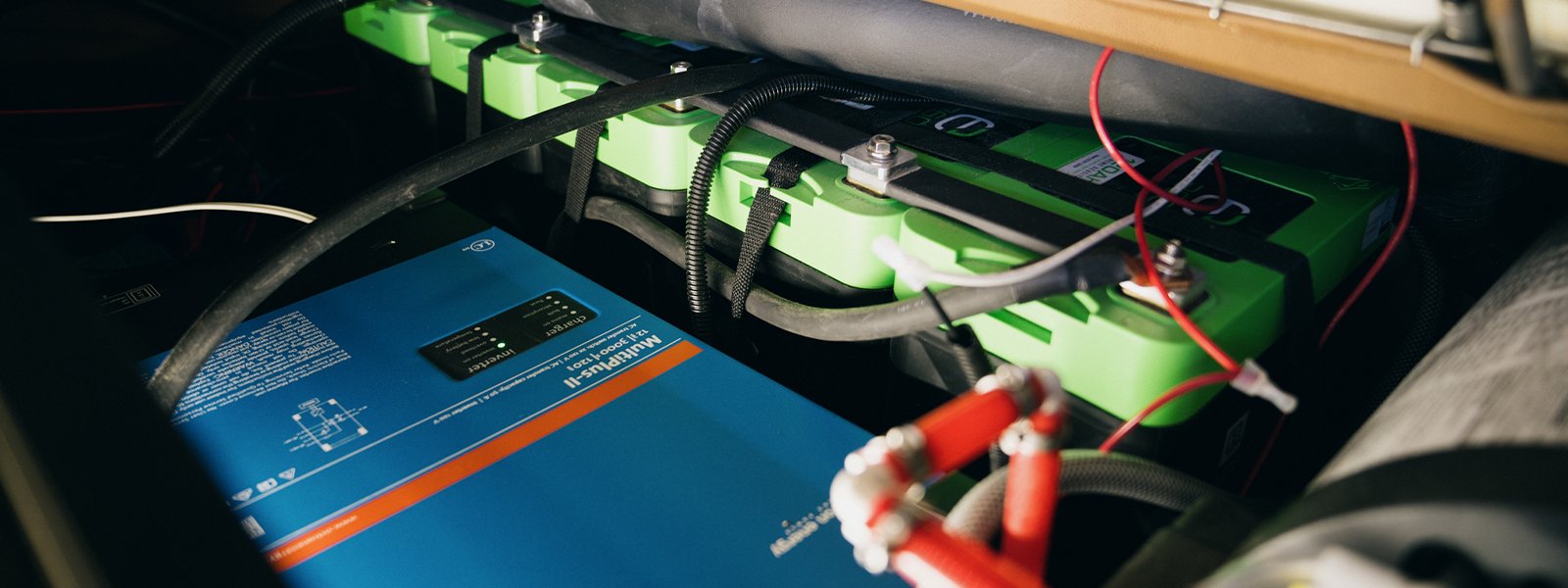Circuit Protection for Your Lithium Battery System
Safety is paramount when exploring (and living off) the road less traveled. One of the best ways to maintain optimal safety for your lithium battery is with a solid understanding of circuit protection and its three categories: proper wire sizing, fusing, and breakers. In this week’s blog, our expert team guides you through the intricacies of your battery’s electrical system and how to protect your battery from potential hazards.
Why Understanding Circuit Protection Makes Your Batteries Safer
The short answer is that lithium battery circuit protection is a failsafe. Every electrical circuit has limitations, such as the maximum amperage and voltage allowed. Lithium batteries have high energy density capabilities, but the adverse impact of that is the concern of overcharging, over-discharging, or discharging too quickly.
A battery’s circuit board has two main components: protection circuits for over-voltage and MOSFETs (metal-oxide-semiconductor field-effect transistors) for overcurrent protection. Both protect the safety of your lithium battery cells and from potentially hazardous situations that can cause harm to your property or person. Although Expion360 batteries are engineered to the highest safety standards (with a UL 1973 compliance), understanding proper wire sizing, fusing, and circuit breakers ensures a safe and efficient electrical system in your rig.
Category One: Wiring
The first component to consider is proper wiring, which includes the average wire gauge, routing, lengths, conductor material, and voltage drop. When it comes to wiring size, it’s important to keep the lengths of every run as short as possible when routing your wires for superior operating voltage. During installation, avoid any sharp objects or potential abrasion that could cut or damage your wire, as this could create a short circuit.
The gauge (or thickness) of your wire also matters and should be able to carry the current load of any part of your circuit. An undersized wire has increased resistance, heat generation, and voltage drop, and often means there’s a hazardous wiring configuration. An oversized wire (or too long of a run) has a higher accumulated voltage drop and resistance, resulting in an underpowered system. As a rule of thumb, always use the same length of cabling to prevent voltage drop when connecting the batteries to your systems.
Related to the gauge, and equally important, is the conductor material or composition. This component impacts resistance—in other words, a higher resistance equals additional heat build-up. With proper wiring configurations and sizing, you can achieve the optimal operating voltage for your application and prevent voltage drops and unsafe conditions.
Category Two: Fusing
A fuse is an electrical device that provides short-circuit or overcurrent protection for your system. Its main element is a wire (or strip of metal) designed to melt at a specific current. If there’s a system or installation failure that results in a current beyond the fuse rating, the element melts and opens the circuit, which eliminates the threat of overheating damage.
Your fuse will vary depending on the voltage and current of your application. For example, the circuit for a six-amp water pump might have an automotive DC-type fuse that’s rated for 10 amps. On the other hand, the output fuse for a 3,000-watt 100-amp inverter charger could be 150 amps. In either case, using the right fuse for a given application is critical.
Consider these parameters when choosing the right fuse:
- The fuse’s voltage rating
- The fuse’s current rating
- Time current characteristic
- Fuse speed
- Interrupting rating (the maximum current that’s safely interrupted)
Proper fusing is a key component in lithium battery circuit protection, increasing your battery's safety, performance, and life cycle.
Category Three: Circuit Breakers
The final piece of knowledge you need in your circuit protection toolbox has to do with circuit breakers. These switching devices have the ability to interrupt circuits (automatically or manually) when an overcurrent or short-circuit event occurs. By interrupting circuit flow after it detects a fault, a circuit breaker prevents further (or any) damage from happening.
There are three types of circuit breakers:
- Single pull — For small 120v AC circuits.
- Double pull — For larger 240v AC circuits that feed appliances like furnaces and ovens.
- Ground fault — Very sensitive devices designed to prevent electrocution by interrupting the circuit when it detects a current imbalance from power entering a human’s body.
Although circuit breakers are used in both AC and DC circuits, they are not meant to be interchanged.
Take Your Investment Further With Expion360
Before you install an E360 lithium battery in your application, we encourage you to familiarize yourself with all components that help it to run safely and smoothly for the long run—including the all-important circuit protection components. With this knowledge, you can enjoy all the unexplored places you’ve only dreamed about.
Explore our battery collection here.
For a visual explanation of this blog, watch the corresponding YouTube video on our channel.





